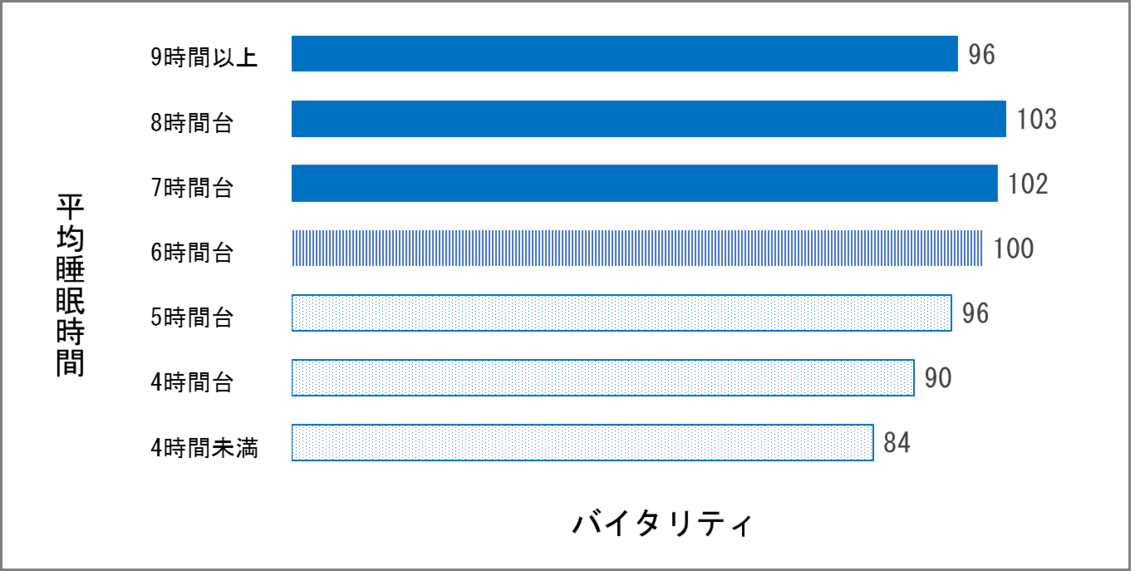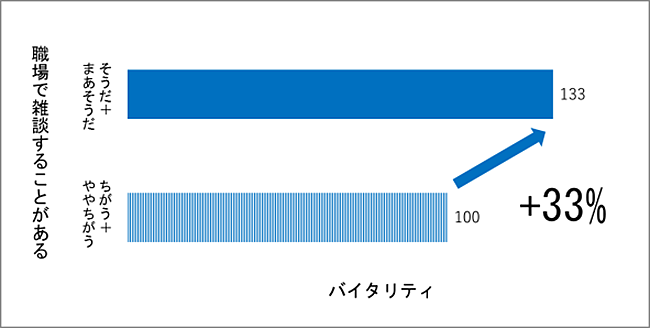Note: This website was automatically translated, so some terms or nuances may not be completely accurate.
Dentsu Inc. conducted a survey of 10,000 company employees nationwide to develop "indicators for healthy working."
The text of the Dentsu Inc. news release distributed on September 4 is as follows.
September 4, 2018
●The keys to healthy work: "Sleep," "Small Talk," and "Habits That Bring a Little Happiness"
●Developed "Indicators for Healthy Work" based on survey results
Dentsu Inc. (Headquarters: Minato-ku, Tokyo; President: Toshihiro Yamamoto) conducted the "Nationwide Survey of 10,000 Company Employees" (hereinafter "this survey") targeting employees from companies of diverse sizes and industries to explore the keys to working healthily within companies and to develop indicators for healthy work.
The survey design was based on the hypothesis that for employees and organizations to be healthy, it is crucial not only to be free of illness but also for each individual employee to be able to work and live with vitality and a positive outlook. It was developed under the supervision of Dr. Yoshiki Ishikawa (Preventive Medicine Researcher) and Dr. Masahiro Nishimoto (Special Researcher, Kitasato University), experts in preventive medicine and workplace health promotion, utilizing the theoretical framework of positive psychology.
This release introduces two key points: 1. The three factors identified in this survey that influence the state of being vibrant and positive in work and life (the state of vitality), and 2. Based on the survey results, we independently developed 10 questions that allow individuals to concisely measure their own state of vitality. By indexing and visualizing this as a Vitality Score, our employees have begun using it as a barometer for healthy work.
1.Regarding the three factors influencing vitality identified in this survey
The factors influencing employee and organizational vitality are: ① "Sleep" ② "Casual Conversation" ③ "Habits That Bring Small Moments of Happiness"
Analysis using statistical methods revealed that three factors relate to employee and organizational vitality: "sleep," "casual conversation," and "habits that bring small moments of happiness" (the habit of scheduling activities that make you happy each week).
① Sleep
Regarding "sleep," the results showed that individuals averaging 8 hours of sleep exhibited the highest vitality levels, indicating a strong correlation between securing sufficient sleep and vitality. Specifically, using the generally accepted minimum of 6 hours of sleep as a baseline, and setting the vitality level of those averaging 6 hours on weekdays at 100, vitality was found to be 16% lower for those sleeping less than 4 hours. Conversely, vitality was about 3% higher for those averaging 8 hours. Conversely, an interesting finding emerged: vitality tended to decrease when average sleep exceeded 9 hours (see Figure 1).
<Figure 1: Relationship between Vitality and "Average Weekday Sleep Duration">

Additionally, we found that the greater the discrepancy between weekday and weekend wake-up times, the lower vitality tends to be and the higher stress levels become.
② Small Talk
Regarding "casual conversation," when the vitality level of those who answered "I don't have casual conversations at work" was set at 100, the vitality level of those who answered "I do have casual conversations" was approximately 33% higher, indicating that casual conversation is related to higher vitality. This suggests that while casual conversation is often perceived as unnecessary for work efficiency, it is actually important from the perspective of vitality (see Figure 2).
<Figure 2: Relationship between Vitality and "Workplace Small Talk">

It was found that engaging in casual conversation itself—such as "private chit-chat" or "career-related discussions"—is deeply linked to high vitality. Similarly, having "opportunities to laugh at work" and "times when everyone chatters and babbles together at work" are also strongly associated with vitality.
③ Habits That Bring a Little Happiness
Regarding "habits that bring a little happiness," those who "make a point to include activities that make them happy in their weekly schedule" showed a 21% higher vitality level compared to those who did not. This suggests the usefulness of properly scheduling things to look forward to in the near future (see Figure 3).
<Figure 3: Relationship between Vitality and "Habits That Bring a Little Happiness">

When asked for specific examples of activities that bring happiness in open-ended responses, examples included "watching recorded TV dramas," "reading at a cafe," "oil massage after a bath," and "going out to eat with friends."
[Overview of the Nationwide Survey of 10,000 Company Employees ]
・Survey Period: March 2 (Fri) to March 5 (Mon), 2018
・Survey Method: Internet survey
・Research Agency: Dentsu Macromill Insight, Inc.
・Survey Participants:
10,000 individual company employees nationwide, male and female, ages 20s to 60s
Employed by companies with 50 or more employees
Allocated by company size × gender based on the 2014 Economic Census (Statistics Bureau, Ministry of Internal Affairs and Communications)
2.Regarding the Development and Implementation of the Vitality Score
As part of our workplace reform efforts, we developed a system enabling employees to concisely measure their own vitality status and began internal implementation in July 2018.
The mechanism is simple: by answering the following 10 questions—whose usefulness has been confirmed based on survey results and academic insights—vitality is visualized and accumulated as an individual's "Vitality Note." Each morning when logging into the company intranet, one question is randomly displayed. Employees select their daily vitality state from a six-level emoji scale (see Figure 4). By consistently answering these questions, our employees can understand their own condition without being personally identified by others.
Our proprietary analysis has revealed a correlation between the vitality score—measured by the combined 10 questions—and levels of "work performance" and "stress."
<10 Questions Measuring Vitality Score>
【Sleep】How has your sleep been lately?
【Smile】Have you been smiling lately?
【Satisfaction】How satisfied have you been with daily life lately?
【Engagement】 Have you been engrossed in work lately?
【Empathy】Have you been interacting with empathy at work lately?
【Relationships】How have workplace and job relationships been lately?
【Meaning】 Do you find your work meaningful lately?
【Growth】Do you feel you're growing professionally lately?
【Responsibility】Have you had opportunities to fulfill your responsibilities at work lately?
【Initiative】Do you feel you're proactively creating work lately?
<Figure 4: Radar Chart Image of 6-Level Emoji and Vitality Score>

End
<Reference>
In our April 16, 2018 release, we announced the trial introduction of "Vitality Note," a tool that visualizes employees' daily condition, and its full-scale rollout starting in July. The company-wide rollout began sequentially starting July 17. Regarding "sleep," one factor influencing vitality, we are lending activity trackers to interested employees to objectively measure sleep duration and quality. Currently, approximately 2,000 employees are using them. We are also designing and experimenting with workplace environments to promote "casual conversation." Regarding "habits that bring a little happiness," we aim to expand the adoption of input habits that make individual employees feel happy, linking this with the currently trialed "Input Holiday" (a day off from work).
Dentsu Inc. News Release
http://www.dentsu.co.jp/news/release/2018/0904-009596.html
Was this article helpful?